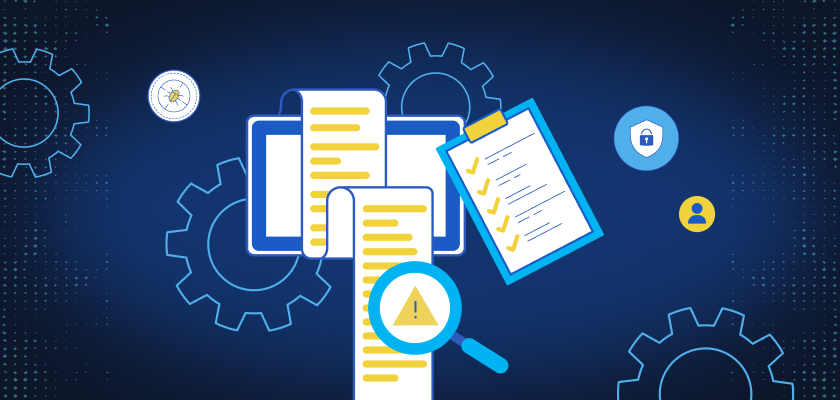
SOC 2 isn’t just a checkbox, it’s a demonstration of trust.
The assessment phase is where preparation meets scrutiny. Whether this is your first SOC 2 audit or your fifth, knowing what to expect can save time, prevent surprises, and position your organization for success.
In this guide, we walk through every stage of the SOC 2 assessment, from scoping and evidence collection to audit findings and report delivery, plus how to make the process smoother with automation.
What Is a SOC 2 Assessment?
A SOC 2 assessment is a formal audit conducted by an independent CPA or licensed audit firm. It evaluates how well your organization meets one or more of the AICPA’s Trust Services Criteria:
- Security (required)
- Availability
- Processing Integrity
- Confidentiality
- Privacy
Depending on the report type:
- SOC 2 Type I evaluates whether controls are appropriately designed at a single point in time.
- SOC 2 Type II assesses whether controls are both designed and operating effectively over a review period (typically 3–12 months).
What’s Included in the Assessment Phase?
The SOC 2 assessment follows a structured path. Here’s what’s typically involved:
- Scoping
Define which systems, personnel, vendors, and business processes are in scope. Align scope with the selected Trust Services Criteria. - Evidence Collection
The auditor will request proof of how your controls are implemented and maintained. This includes:- Access logs
- Policy documents
- Change management records
- Encryption configurations
- Incident response procedures
- Access logs
- Control Testing
The auditor will test:- Control design (Type I)
- Control effectiveness over time (Type II)
- Control design (Type I)
- Interviews and Walkthroughs
Auditors may interview IT, HR, DevOps, or leadership teams to verify understanding and execution of control procedures. - Gap Identification
During fieldwork, auditors may flag missing or insufficient controls. These must be addressed or noted in the report.
Assessment Timeline and Milestones
SOC 2 Type I:
- Can be completed in a few weeks once controls are documented and implemented.
- Best for organizations pursuing SOC 2 for the first time.
SOC 2 Type II:
- Includes an observation window, commonly 3 to 12 months.
- Auditors verify that controls operated effectively across that period.
Typical Timeline Breakdown:
- Readiness Phase – Internal preparation, control gap resolution
- Fieldwork – Auditor reviews evidence, conducts interviews, tests controls
- Report Drafting & Review – Auditor prepares draft report for review
- Final Report Delivery – SOC 2 report issued for internal and client use
SOC 2 Assessment Mistakes That Can Cost You
Avoid these common issues to stay on track:
- Outdated or missing policies
- Inconsistent evidence collection
- Unclear control ownership
- Poor communication with your auditor
- Failure to address known gaps before the audit begins
The MSP Guide to SOC 2: Preparing for a SOC 2 Journey
DownloadBest Practices for Passing Your SOC 2 Assessment
- Start with a Readiness Assessment: Identify and remediate control gaps before the formal audit.
- Centralize Your Documentation: Use a secure, version-controlled system to store policies, logs, and evidence.
- Automate Evidence Collection: Implement tools that continuously pull logs and map data to relevant controls.
- Train Your Team: Make sure each control owner understands their responsibilities during the audit and walkthroughs.
What Happens After the Assessment?
Once the audit is complete, the auditor will issue your official SOC 2 report. This will include:
- A description of your system
- The scope and period covered
- The auditor’s opinion:
- Unqualified (clean)
- Qualified (with exceptions)
- Adverse (failed)
- Unqualified (clean)
This report becomes an asset for procurement reviews, vendor assessments, client onboarding, and RFPs.
For SOC 2 Type II, note that the report is valid for 12 months. Ongoing assessments are typically required to maintain audit-ready status.
Simplify SOC 2 Assessment with Cynomi’s Automated Platform
SOC 2 assessments don’t have to be painful. Cynomi’s platform automates the prep work and streamlines compliance operations for MSPs, MSSPs, and other service providers.
Here’s how Cynomi helps:
- Automated Readiness Assessments
Run real-time assessments aligned to all five TSCs. Identify gaps and receive prioritized action plans. - Built-In Policy Generation
Create custom, audit-ready policies tailored to your stack, users, and scope, in minutes. - Evidence Collection Engine
Automatically pull and tag audit evidence from core systems, mapped to SOC 2 control requirements. - Collaborative Task Management
Assign control ownership and track tasks across teams with full visibility into remediation progress. - Always Audit-Ready Dashboard
Centralize controls, documentation, and history in a live, auditor-friendly dashboard.
Frequently Asked Questions About SOC 2 Assessments
For Type I, a few weeks after readiness. For Type II, 3–12 months of control operation plus audit review time.
A readiness assessment is internal, meant to prepare for the formal audit. The assessment is the audit itself, conducted by an external CPA.
System logs, policy documents, access records, encryption configurations, incident reports, HR onboarding checklists, and more.
Type I is ideal for initial validation. Type II provides higher assurance and is often requested by enterprise clients.